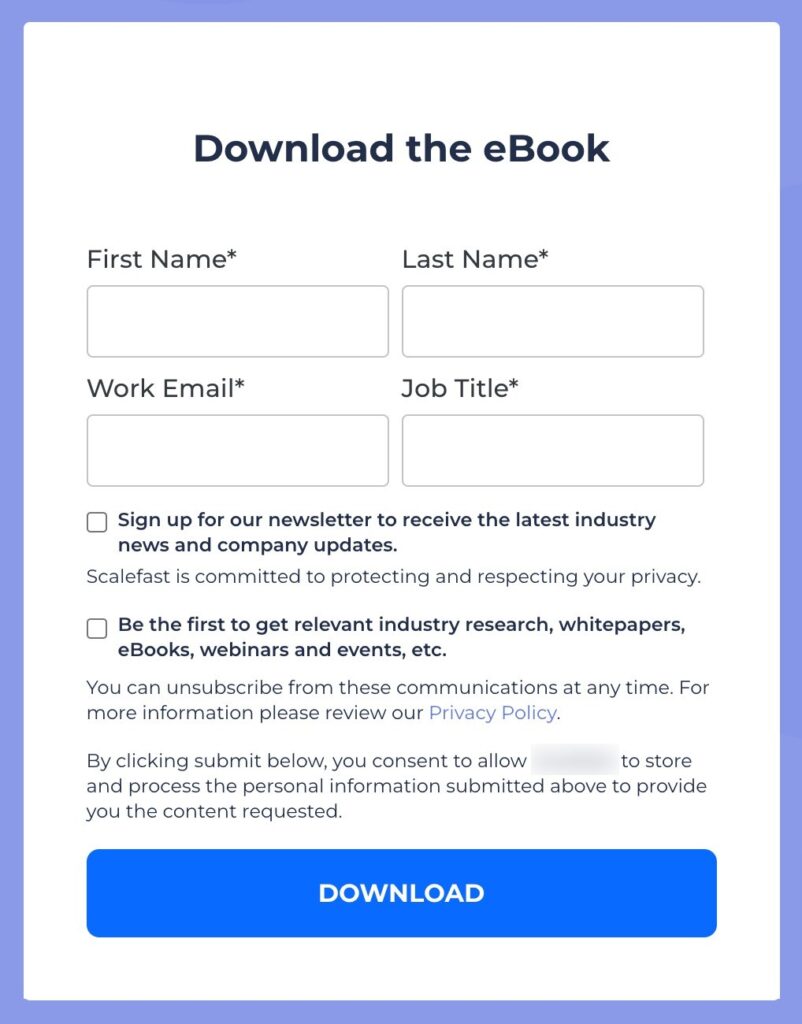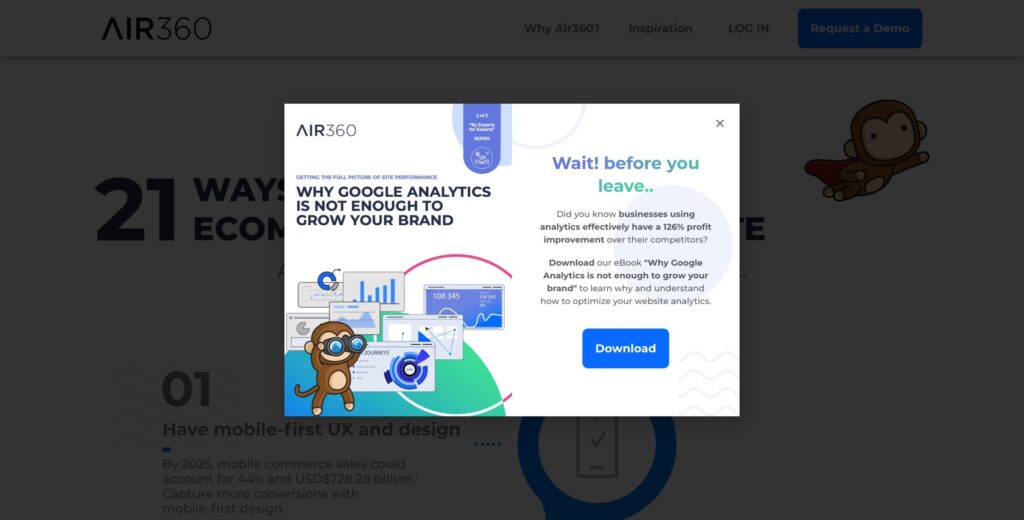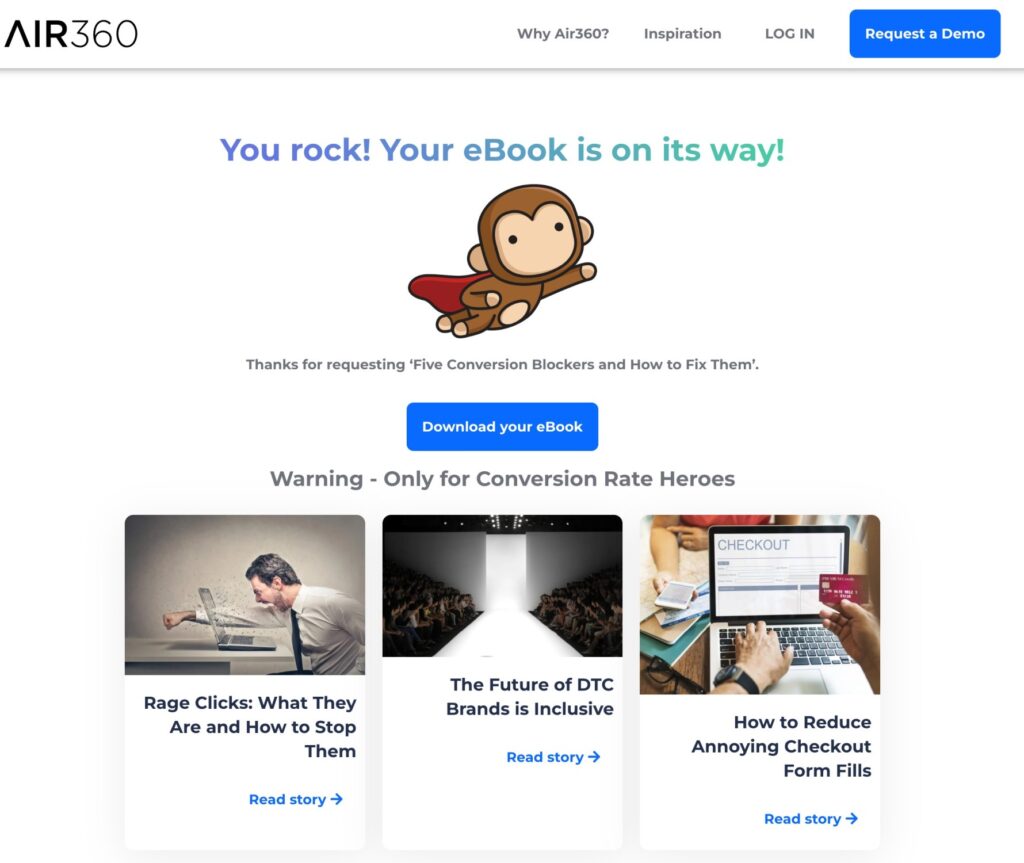Landing pages are the digital evolution of certain direct marketing techniques. In the past, when many of the channels were paper-based (newspapers and magazines, brochures, catalogs, etc…), they used to include a campaign to obtain data from a potential customer and thus generate a database of contacts with whom to establish lasting relationships.
These campaigns were based on an offer, understood as a value proposition, which usually included an offer accelerator, i.e., an incentive to stimulate the potential customer to provide his data, and a coupon or form where certain data would be requested.
When the company promoting the campaign received the filled-in coupons, known as redeeming the coupon, these data became part of a database on which subsequent actions were planned in order to achieve a goal.
Nowadays, in a digital world, the whole process described above is done through landing pages.
What is a landing page
A landing page is a web page to which visitors are attracted by campaigns on search engines, social networks or other web pages, including your own corporate website.
The objective of this page is to capture data from a potential customer (lead) that will be incorporated into a database, which is called conversion, and which, in turn, will trigger a process of lead nurturing until the visitor is transformed into a customer.
Consequently, landing pages are in the middle of a complex digital marketing action that begins with the design of attraction campaigns and concludes with the conversion of contacts into customers.
From the communication point of view, this whole process must be perfectly aligned, which will affect both the dissemination channels of the campaign, the messages, whether text or multimedia, and the subsequent actions until the objective is achieved.
There is no such thing as a perfect landing page. Its effectiveness in conversion will depend on many factors and we should consider performing an A/B test, with different designs and contents, to test which one works best.
Anatomy of a landing page
A landing page is a complex design, with different components, which must be oriented to facilitate conversion. We will analyze each of them.

Consistency with company, product or campaign identity
When designing a landing page, the graphic identity elements of the context in which this page is built must be taken into consideration. For this reason, the presence of the company logo (without a link to the landing page, for the reasons we will see below), typographies, colors and other graphic elements must be in line with other elements of the campaign (advertisements, messages, etc.).
Absence of external links
Although the landing page is integrated into the set of pages that make up a website, it is necessary to prevent the user who accesses it from easily leaving and going to other pages. It is not an easy task to get a visitor to our landing page to make it easy for him to leave.
In this way, we must avoid any type of link to other pages, eliminating navigation menus in the header or footer.
Even those links that are mandatory under the GDPR, such as links to privacy or cookie policies, must activate popups within the landing page itself.
The offer or value proposition
This consists of a text justifying why a visitor should give up his or her data. Therefore, it should define the benefits that the visitor will obtain and the procedure to obtain them.
The text should be short and clear. Bold or list type highlights should be used to underpin the main messages in this content.
The incentive or accelerator
This is an additional benefit to the value proposition that should incentivize the release of the data, e.g. downloading an eBook.
This incentive may be shown in the text (eBook table of contents) or by means of a graphic element (eBook cover).
In those campaigns with a limited time for the visitor to provide their data, a countdown can be displayed.
The form
The form is the main piece of interaction in a landing page and is equivalent to direct marketing coupons. A form is made up of a series of fields that the user must fill in to provide their data. In general, the less data we ask for, the easier it will be for the visitor to fill it in.
However, the amount of data to be requested must be sufficient to pre-qualify the contact (MQL: Marketing Qualified Lead). For this reason, all fields in the form should be mandatory.
The actions designed after sending the form will contribute to this process of accompaniment or qualification referred to at the beginning.
The form must contain the legal texts corresponding to the owner of the data being collected, the legitimacy of the data subject and the processing of the data, i.e., what the data will be used for a posteriori. It must also include a link to the privacy policy which, as mentioned above, can be displayed in a pop-up window to avoid leaving the page.
Finally, it will include a button for submitting the form or call to action (CTA). This button should be designed to stand out from the rest of the landing page content, both in the use of colors and messages. For example, a button with the message “Download your eBook now” is more effective than one that simply says “Submit” or “Send”.

User cancellation
If, despite having worked carefully on the landing page, the visitor has not completed the task of filling out and submitting the form, we still have a last resort to get their attention.
We have already said that the landing page should not contain links to other pages. Consequently, the visitor will have to move the cursor outside the browser window, either to click on the back arrow, to position himself in the address bar or to close the tab or the browser itself.
This movement can be detected and trigger a pop-up window that allows the user to regain focus on the offer, sometimes with a second incentive, or propose an alternative that might be more in line with their needs, taking them to an alternative landing page.

Actions after form submission
The work of developing a landing page would not be complete without considering the actions that occur once the form is submitted. Below we will describe some of them, which can take place independently or together.
It is not appropriate that, once the form is submitted, it is shown again to the visitor. This may cause the visitor to doubt whether their data has been submitted correctly and lead to multiple resubmissions of the same data.
Thank you message
The thank you message is displayed in the same place as the form, advising the visitor that their data has been successfully submitted and including any further instructions to the visitor on what to do next.
Confirmation e-mail
The system sends the visitor an e-mail whose content can vary from a simple confirmation message of the form submission or include a download link or access to certain content, depending on the incentives of the campaign.
We must take into account the considerations of deliverability of these emails because they can be blocked by filters on the recipient’s servers or appear in the SPAM folder, so it is usually indicated to send the message by an alternative means.
Thank you page
The thank you page is complementary to the landing page and is the page to which the visitor is automatically redirected once the form has been submitted.
The usefulness of thank you pages is very varied. First of all, it provides the visitor with quick information on the result of the form submission and allows access to the incentives determined by the campaign (downloads, access to private content, etc.).
It can also be used to present a new value proposition, turning it into a new landing page (chained landing pages), or simply displaying content related to the contact’s interests.
From an analytical point of view, this page can help us to measure more easily the successful activations of the form. In any case, we must make sure that this page is not indexed by search engines.

Integrations
As we have already mentioned, the landing page is one more step in the process of converting a potential contact into a customer. For this reason it is very important, when designing a campaign, to consider the actions that will take place once the contact has given us their data.
Most likely, we will have to use additional tools to continue the process, tools that can range from a simple mass mailing manager, such as MailChimp, ActiveCampaign or Sendinblue, to complex Customer Relationship Management (CRM) platforms, such as HubSpot, SalesForce or ZohoCRM.
Conclusion
The development of a landing page is a part of a complex process that is generally integrated into a campaign and whose main objective is to attract potential customers.
Its design and development must be aligned with the campaign objectives, so that it offers a good user experience throughout the customer journey. To achieve this, design skills must be used in conjunction with web development knowledge to create attractive landing pages that encourage conversions.
There is a set of rules that must be taken into account when creating a landing page which, although they are built as web pages, are very different from those that constitute the informative part of a website.
It is a good practice to perform comparative tests to check which designs produce higher and better conversions.



